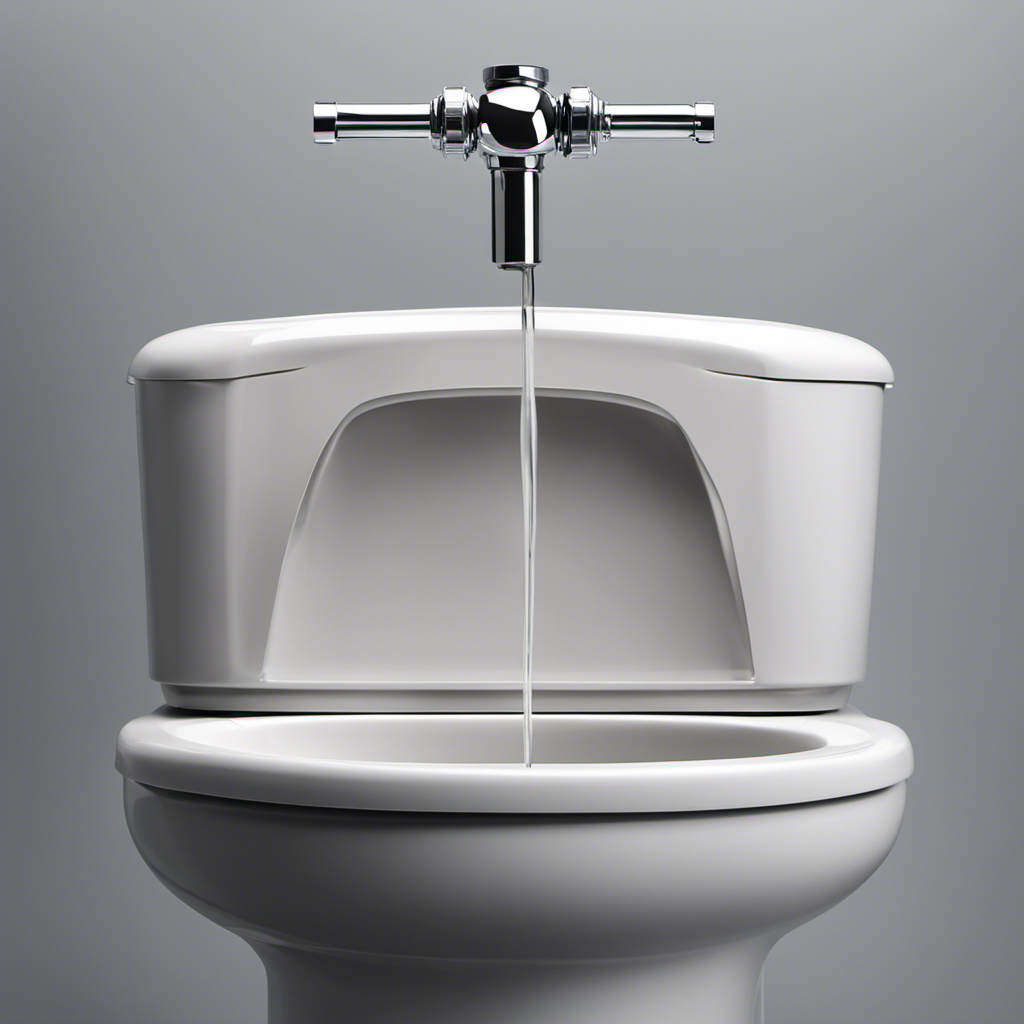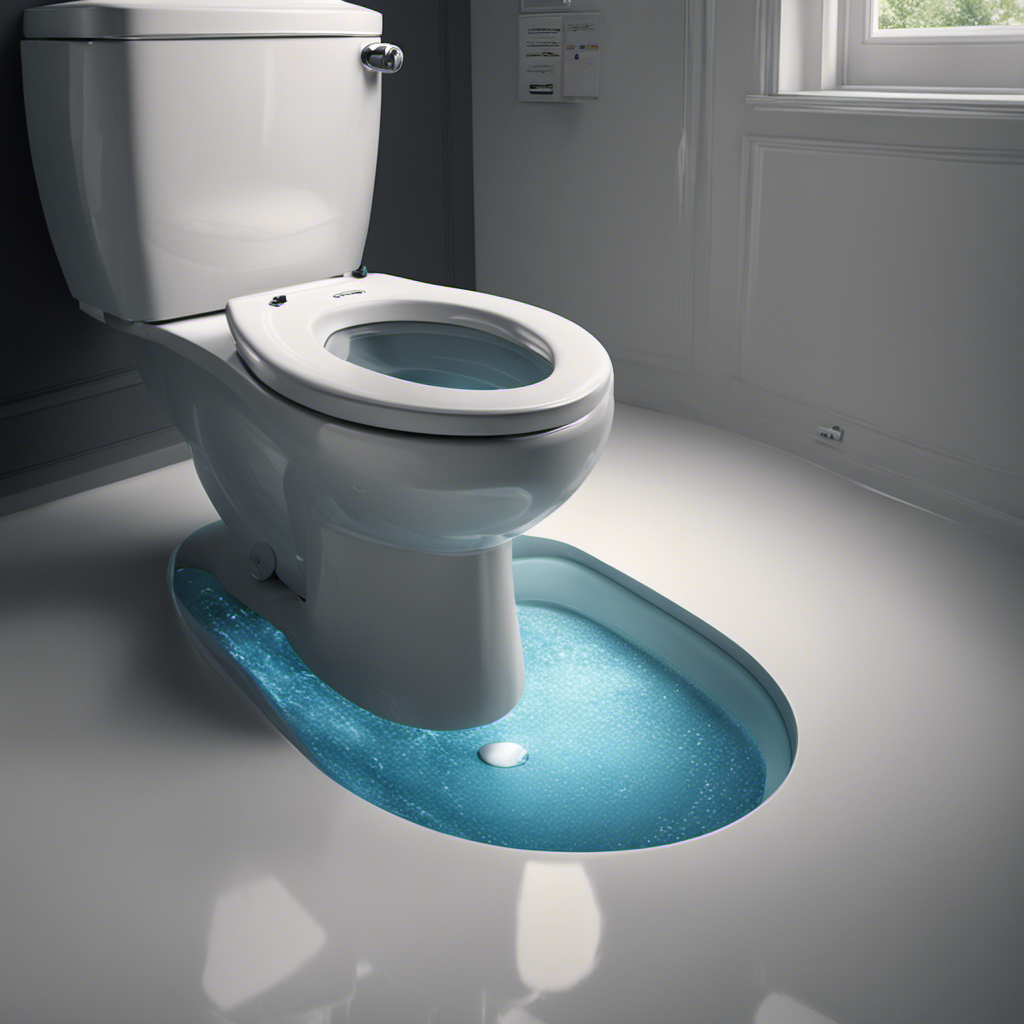It might seem like a basic staple today, but were you aware that the invention of the flush toilet was revolutionary? Originating thousands of years ago, this extraordinary invention transformed the way we maintain cleanliness and sanitation.
In fact, it’s estimated that over 2.5 billion people worldwide rely on flush toilets today for their daily needs.
In this article, we delve into the fascinating story of who invented the flush toilet and why, exploring the impact it had on improving public health and transforming society.
Get ready for a deep dive into the history and significance of this essential invention.
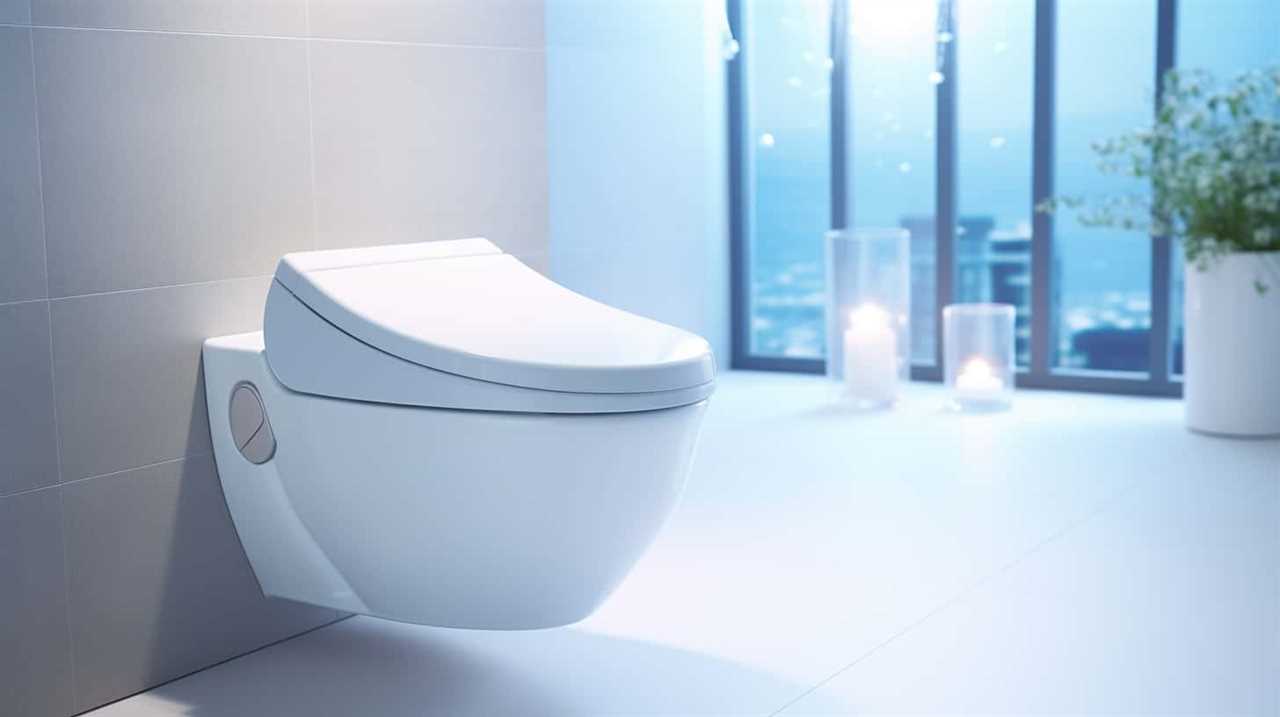
Key Takeaways
- The flush toilet was invented by Sir John Harington, who was motivated by the poor sanitation conditions of his time.
- The flush toilet revolutionized waste disposal and significantly improved public health by reducing the spread of diseases like cholera and typhoid fever.
- Access to improved sanitation, such as flush toilets, has a significant impact on public health and creates healthier living conditions.
- The widespread adoption of the flush toilet revolutionized sanitation practices, improved quality of life, and contributed to the growth of cities and economic development.
The Origins of Early Sanitation Practices
We’ll explore the origins of early sanitation practices. The need for sanitation can be traced back to ancient civilizations such as the Indus Valley, where advanced drainage systems were developed around 2500 BCE. These early societies recognized the importance of separating waste from living spaces to maintain hygiene and prevent the spread of diseases.
In ancient Rome, public bathhouses and sewage systems were constructed, demonstrating a sophisticated understanding of sanitation. The concept of waste disposal continued to evolve throughout history, with advancements in plumbing and sewage systems in medieval Europe.
The understanding of sanitation practices grew alongside scientific discoveries, leading to the development of modern sanitation systems that we rely on today. Understanding the origins of early sanitation practices provides valuable insight into the progression of human civilization and the importance of maintaining cleanliness and hygiene for overall health and well-being.
Ancient Toilets: a Glimpse Into the Past
After exploring the origins of early sanitation practices, we now delve into the fascinating world of ancient toilets and gain a glimpse into the past.
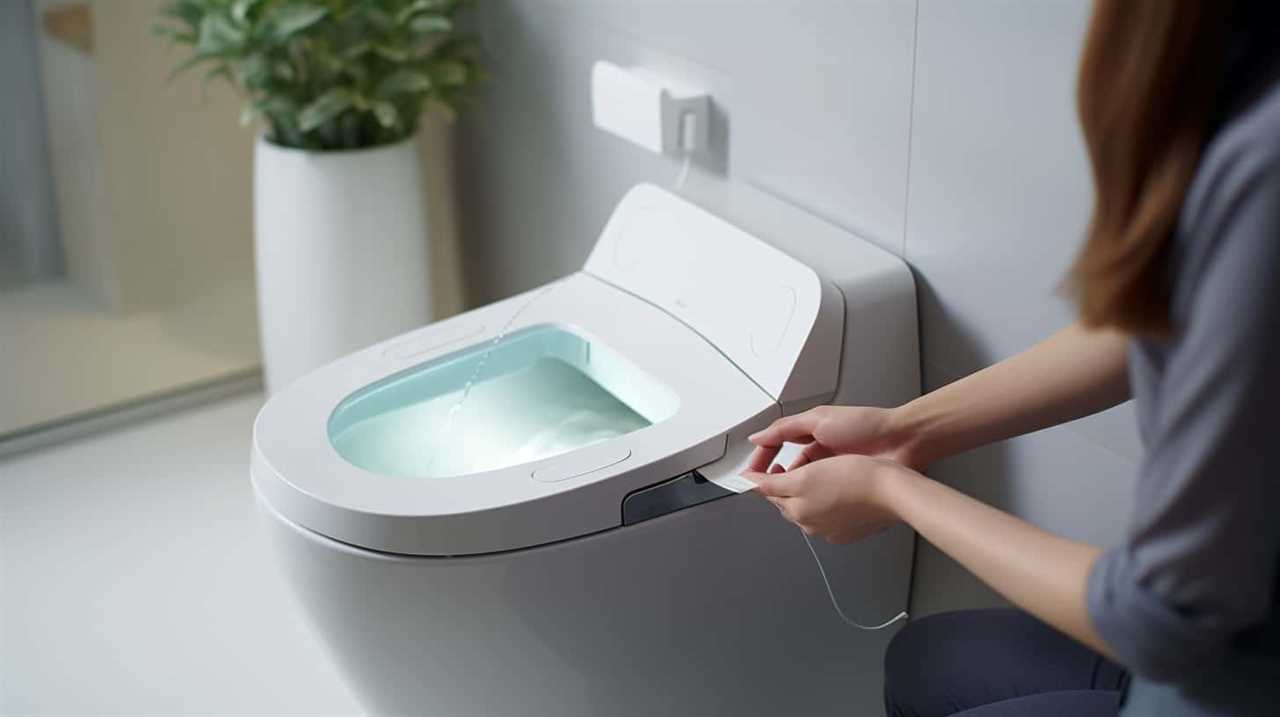
Ancient toilet designs varied across different civilizations and time periods, reflecting the historical sanitation practices of each society. In ancient Rome, for example, public toilets known as ‘latrines’ were common and could accommodate multiple users at once. These latrines consisted of stone or marble benches with holes, positioned over a channel of flowing water to carry away waste.
In ancient Egypt, on the other hand, toilets were often simple wooden seats with a hole leading to a pit or container below.
Understanding ancient toilet designs provides valuable insights into the daily lives and hygiene practices of our ancestors, allowing us to appreciate the advancements in sanitation that we enjoy today.
The Breakthrough Invention: The Flush Toilet
When it comes to the breakthrough invention of the flush toilet, there are several points worth discussing.

Firstly, we need to explore the inventor and their motivation behind creating this revolutionary device.
Secondly, it’s crucial to analyze the impact of the flush toilet on sanitation practices and how it brought about a significant revolution in public health.
Lastly, we should examine the evolution of the flush toilet over time and how it has improved in terms of efficiency and water conservation.
Inventor and Motivation
The inventor of the flush toilet and their motivation behind this breakthrough invention is an intriguing story that revolutionized sanitation. The person behind this invention was Sir John Harington, an English courtier and godson of Queen Elizabeth I. Harington’s background as a courtier gave him access to the luxurious palaces of the time, where he witnessed the unsanitary conditions of the chamber pots being emptied directly into the streets.
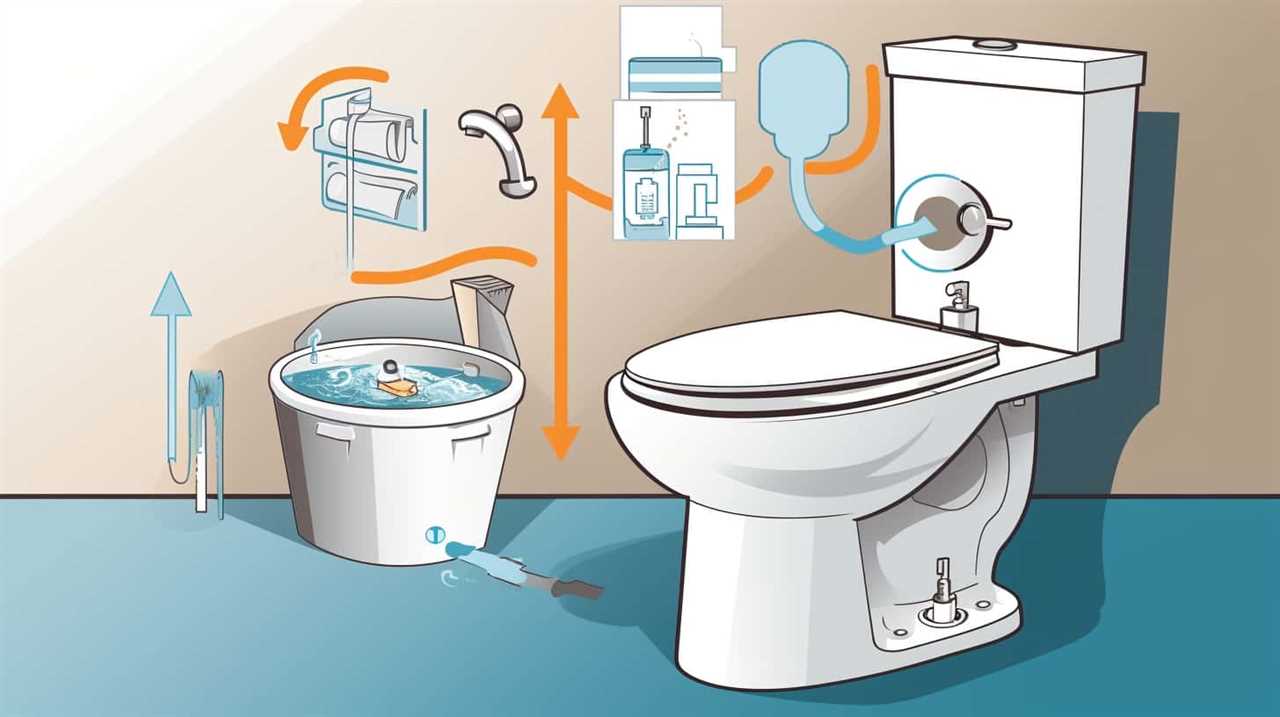
Motivated by the societal impact of poor sanitation on public health and the environment, Harington set out to create a solution. His motivation was driven by a desire to improve sanitation and eliminate the foul odors and diseases associated with improper waste disposal.
Harington’s flush toilet invention was a significant advancement that paved the way for modern sanitation systems.
Sanitation Revolution Impact
One significant impact of the breakthrough invention of the flush toilet was the transformation it brought to sanitation practices. Before its invention, sanitation advancements were limited, often consisting of simple pit latrines or chamber pots. These methods weren’t only unhygienic, but also posed serious health risks, contributing to the spread of diseases and the contamination of water sources.
The flush toilet revolutionized public health by providing a more efficient and sanitary means of waste disposal. By using water to flush away waste, it eliminated the need for manual handling and reduced the risk of contamination. This led to a drastic improvement in public health, as the spread of diseases like cholera and typhoid fever was significantly reduced.
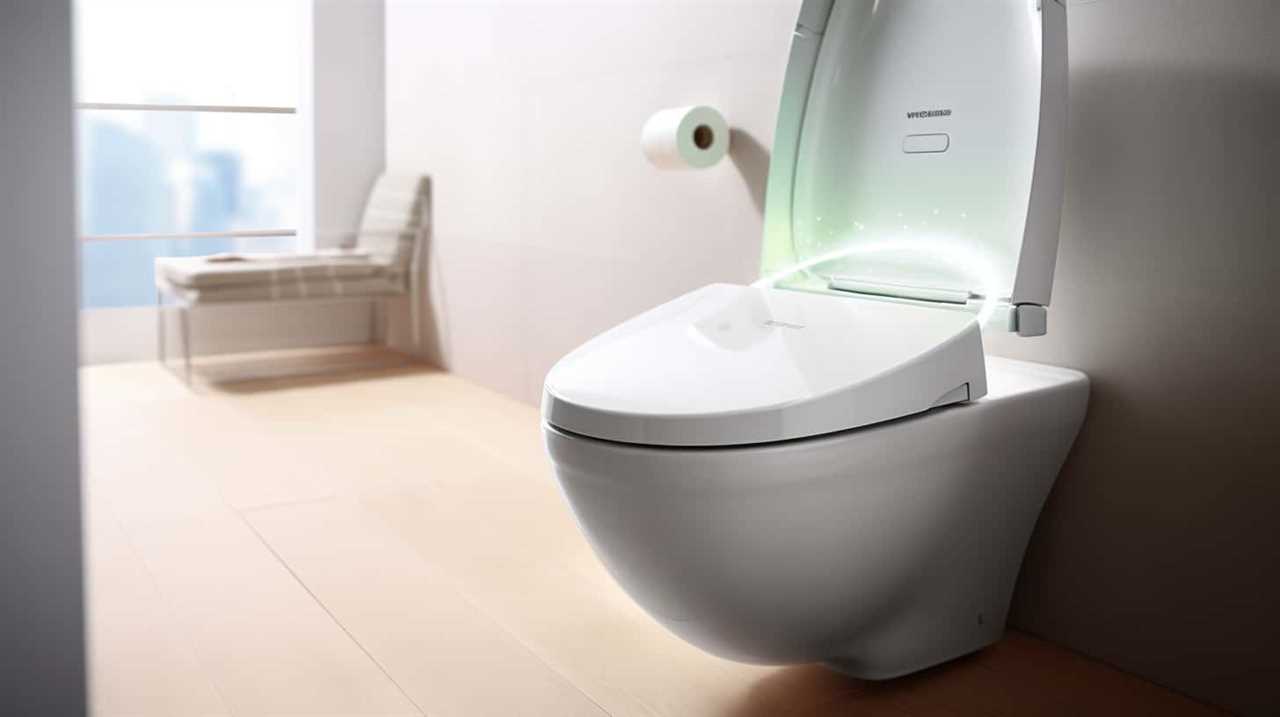
The flush toilet became a cornerstone of modern sanitation practices, laying the foundation for further advancements in waste management and public health.
In the subsequent section, we’ll explore the evolution of the flush toilet and how it has evolved over time to meet the changing needs of society.
Evolution of Flush Toilet
As we continue our exploration of the evolution of the flush toilet, it’s important to note that this breakthrough invention has undergone significant advancements and improvements over time. The evolution of toilet design has resulted in more efficient and hygienic systems that have revolutionized sanitation practices.
Here are three key developments in the evolution of the flush toilet:

- Dual-flush toilets: These innovative designs offer two flushing options, allowing users to choose between a full flush for solid waste and a reduced flush for liquid waste. This helps to conserve water by using only the necessary amount for each type of waste.
- Low-flow toilets: These toilets are designed to use less water per flush compared to traditional models. By incorporating improved flushing mechanisms and water-saving technologies, low-flow toilets have significantly reduced water usage without compromising performance.
- Smart toilets: With advancements in technology, smart toilets have emerged as the latest innovation in toilet design. These toilets often feature motion sensors, automatic flushing, self-cleaning capabilities, and adjustable water pressure and temperature settings. They offer enhanced comfort, convenience, and water efficiency.
Through continuous innovation and improvement, the evolution of the flush toilet hasn’t only transformed bathroom experiences but also contributed to sustainable water usage and improved sanitation practices.
Who Was the Inventor of the Flush Toilet
Although we may not know the exact identity of the inventor, we can trace the invention of the flush toilet back to ancient civilizations.
The concept of a toilet that flushes waste away was first developed by the ancient Indus Valley civilization around 2500 BCE. These early flush toilets, known as ‘water closets,’ were found in settlements such as Mohenjo-daro and Harappa, which are now part of modern-day Pakistan.
The invention of the flush toilet had a significant impact on hygiene, as it allowed for the efficient disposal of waste and helped to prevent the spread of diseases. It’s remarkable to think that even thousands of years ago, people recognized the importance of proper sanitation and took steps to improve public health.
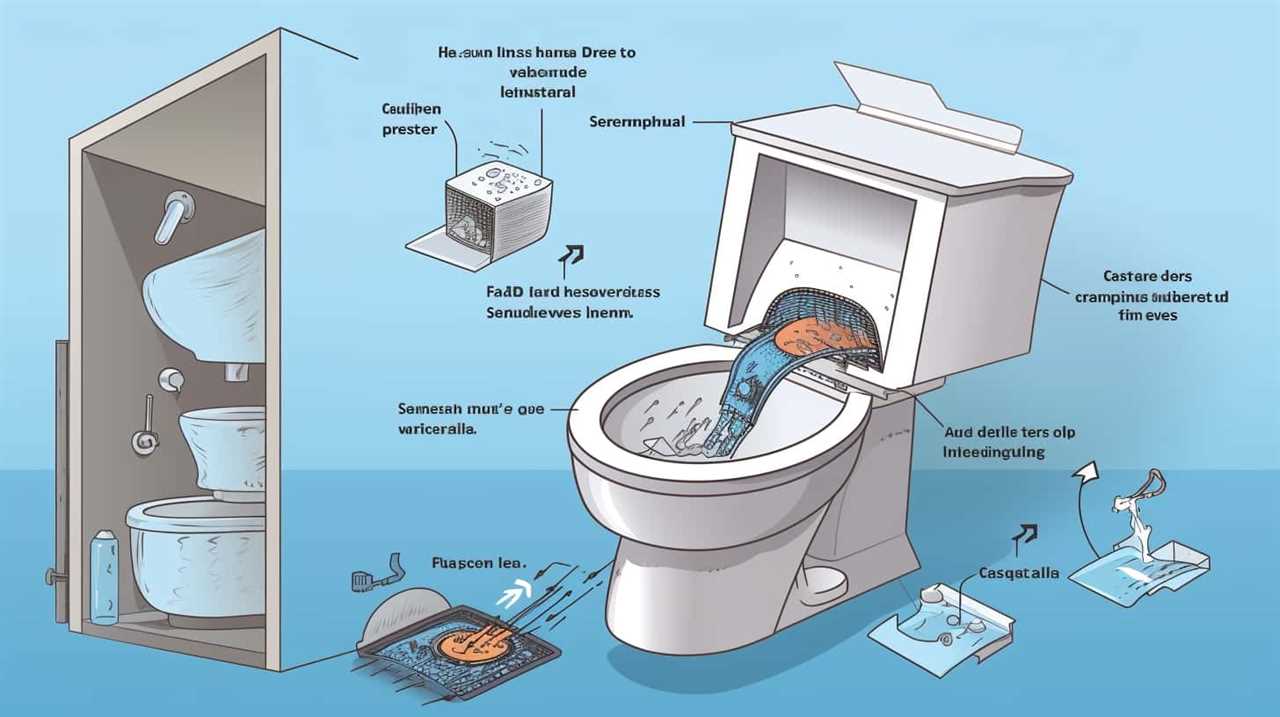
The Purpose and Need for Improved Sanitation
Our society’s need for improved sanitation is evident in the widespread use of flush toilets. The invention of the flush toilet was driven by the desire to address the pressing issues surrounding hygiene and public health. Here are three reasons why improved sanitation was crucial:
- Disease prevention: The use of flush toilets helps to remove human waste quickly and efficiently, reducing the risk of diseases caused by unsanitary conditions. By eliminating waste promptly, the spread of harmful bacteria and viruses is minimized.
- Improved hygiene: Flush toilets provide a more hygienic solution compared to traditional methods of waste disposal. The flushing action effectively removes waste, reducing odors and maintaining a cleaner environment.
- Public health impact: Access to improved sanitation, such as flush toilets, has a significant impact on public health. It helps to prevent the spread of diseases and creates healthier living conditions for individuals and communities.
How the Flush Toilet Revolutionized Hygiene
One of the ways the flush toilet revolutionized hygiene is by providing a more efficient and sanitary method of waste removal. Before the invention of the flush toilet, waste was often disposed of in open pits or cesspools, which posed a significant risk to public health.
The introduction of the flush toilet allowed for the immediate removal of waste, preventing the accumulation of harmful bacteria and foul odors. This revolutionary impact on sanitation significantly improved public health by reducing the spread of diseases such as cholera and dysentery, which were commonly associated with poor sanitation practices.
The flush toilet’s ability to quickly and effectively remove waste not only transformed the way we manage our bodily functions but also played a crucial role in the overall improvement of public health.
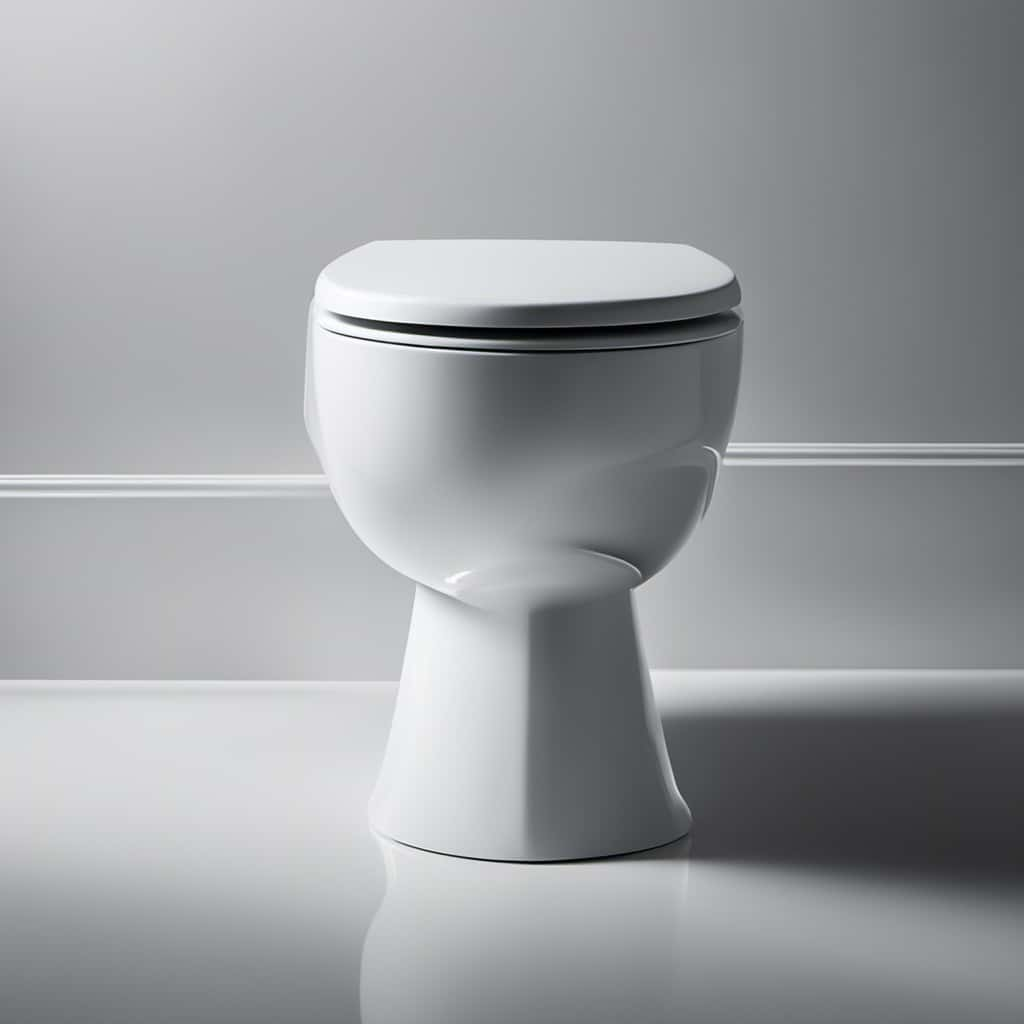
As we delve into the spread and impact of the flush toilet, we’ll further explore its contributions to modern society.
The Spread and Impact of the Flush Toilet
The flush toilet rapidly spread and had a profound impact on sanitation practices and public health. Its introduction marked the beginning of a sanitation revolution that transformed the way people lived and improved overall hygiene. Here are three key ways in which the spread of the flush toilet had a lasting impact:
- Improved sanitation: The flush toilet eliminated the need for manual waste disposal, reducing the risk of contamination and the spread of diseases like cholera and typhoid.
- Enhanced public health: By providing a clean and convenient means of waste disposal, the flush toilet helped to prevent the accumulation of waste in cities, improving overall public health and reducing the incidence of infectious diseases.
- Increased comfort and convenience: The flush toilet brought about a significant improvement in personal hygiene and comfort, making everyday life more convenient and pleasant for individuals and communities alike.
The widespread adoption of the flush toilet revolutionized sanitation practices, leading to significant improvements in public health and quality of life.
Evolution and Advancements in Toilet Technology
As we delve into the evolution and advancements in toilet technology, it becomes evident that the flush toilet’s invention paved the way for a multitude of innovative improvements in waste disposal systems. Over the years, toilet designs have greatly evolved, incorporating modern plumbing systems and advanced features for enhanced functionality and hygiene. Let’s take a closer look at some of the key advancements in toilet technology:

| Advancements | Description | Benefits |
|---|---|---|
| Dual Flush System | Allows users to choose between a full flush and a partial flush, conserving water | Reduced water consumption |
| Bidet Toilet | Combines a toilet and bidet functionality, providing a more hygienic and comfortable cleansing | Improved personal hygiene |
| Self-Cleaning | Utilizes advanced cleaning mechanisms to keep the toilet bowl clean and odor-free | Reduced maintenance and improved hygiene |
These advancements highlight the constant innovation and improvement in toilet technology, aiming to provide users with convenience, efficiency, and improved sanitation. With modern plumbing systems, toilet designs continue to evolve, catering to the needs and preferences of individuals seeking mastery over waste disposal systems.
The Lasting Legacy of the Flush Toilet
Continuing our exploration of toilet technology, let’s delve into the lasting legacy of the flush toilet and its impact on sanitation practices worldwide.
The invention of the flush toilet has had a profound and lasting impact on public health improvements. Here are three key aspects of its legacy:
- Disease prevention: The flush toilet played a crucial role in reducing the spread of diseases caused by poor sanitation, such as cholera, typhoid, and dysentery. By efficiently removing waste and preventing its accumulation, the flush toilet significantly reduced the risk of contamination and the transmission of harmful pathogens.
- Improved hygiene: The introduction of the flush toilet revolutionized personal hygiene practices. With the availability of clean and easily accessible toilets, people were able to maintain better cleanliness and prevent the spread of germs, leading to improved overall health and well-being.
- Urban development: The widespread adoption of flush toilets enabled the growth of cities and urban areas. Proper sanitation infrastructure became a cornerstone of modern urban planning, allowing for population expansion and economic development.
The flush toilet’s lasting impact on public health and urbanization can’t be overstated. Its invention continues to shape our lives and contribute to a healthier, more hygienic world.

Conclusion
In conclusion, the invention of the flush toilet revolutionized hygiene practices and greatly improved sanitation around the world.
One interesting statistic to note is that according to the World Health Organization, 4.5 billion people still lack access to safely managed sanitation facilities. This highlights the ongoing need for advancements in toilet technology and the importance of the lasting legacy of the flush toilet in promoting public health and well-being.



